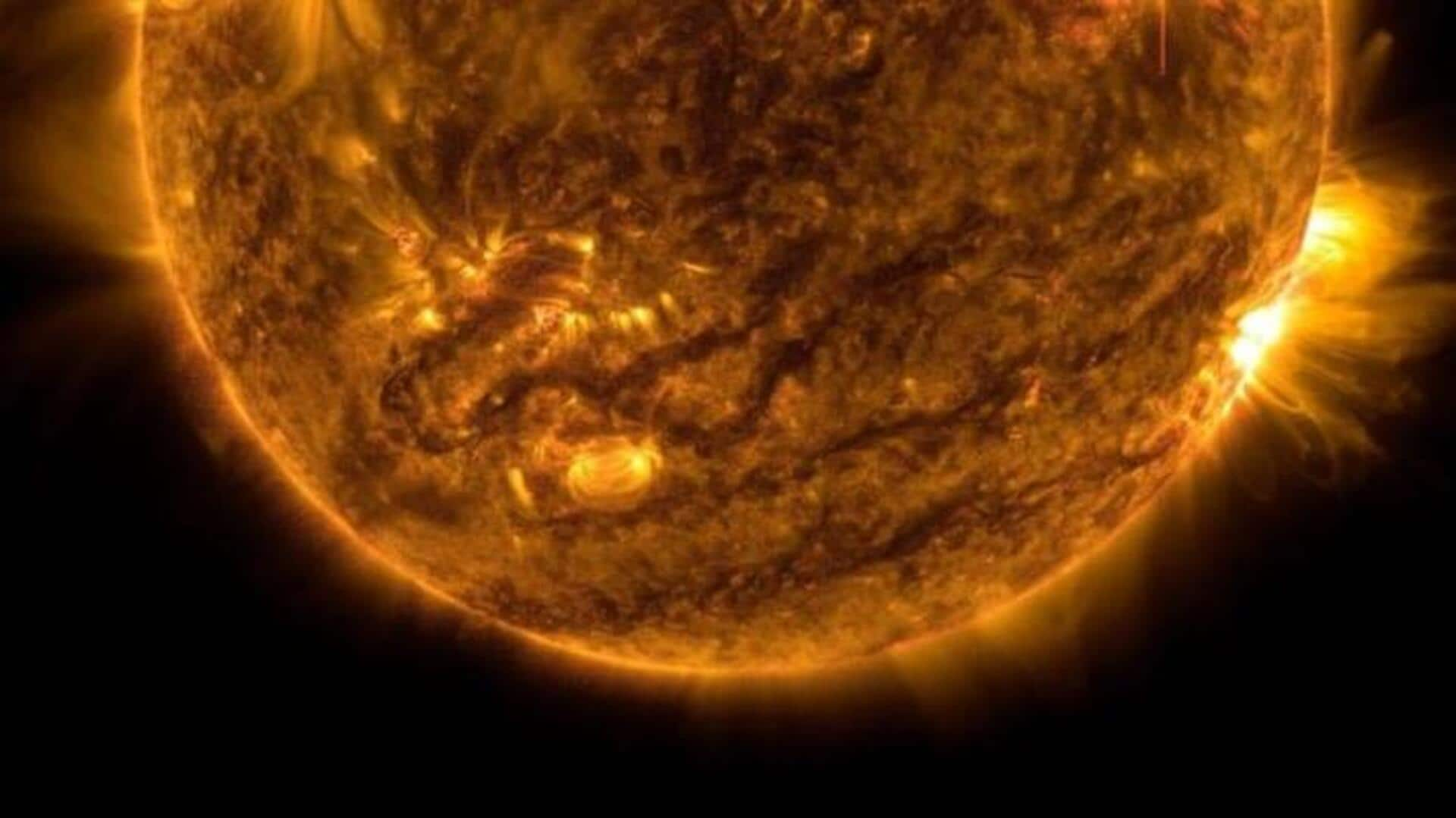
Sunspot eruption hurls solar flares that may reach Earth today
What's the story
A powerful M2-class solar flare may be headed toward Earth today, reports SpaceWeather.com. This flare is the result of an eruption from an Earth-facing sunspot, dubbed AR3425, which was detected by NASA's Solar Dynamics Observatory (SDO) on September 7. That's not all. Another two sunspots: AR3421 and AR3422 also pose a danger to our home planet, as they could hurl out M-class solar flares.
Details
Solar flares and their potential effects
Solar flares are enormous explosions on the Sun that send out pockets of energy, light, and high-energy particles into space, per NASA. Based on their strength, solar flares are classified on a logarithmic scale, similar to how earthquakes are measured. The classifications begin with A-class, followed by B, C, M, and X. A-class flares are the weakest while X-class ranks as the most intense. These flares can potentially disrupt radio communications, cause power outages, and affect GPS systems, among others.
Insights
NOAA is monitoring the situation
Several overlapping coronal mass ejections (CMEs) have also been observed. Experts at the National Oceanic and Atmospheric Administration (NOAA) are closely monitoring the situation to determine if any of these CMEs resulted from the sunspot explosion. Similar to solar flares, CMEs are also explosions that occur on the Sun. However, solar flares develop much more rapidly, with much more energy, than CMEs, per National Geographic.
SDO
NASA's SDO carries several instruments to observe the Sun
NASA's SDO carries a suite of instruments to observe solar activity. These include the Helioseismic and Magnetic Imager (HMI), which measures the magnetic field over the entire solar surface or photosphere. The remaining two are the Extreme Ultraviolet Variability Experiment (EVE), which measures the Sun's extreme ultraviolet irradiance, and Atmospheric Imaging Assembly (AIA), which provides continuous full-disk observations of the corona—outermost part of Sun's atmosphere. Together, these instruments monitor the Sun almost constantly and fetch 1TB of data per day.